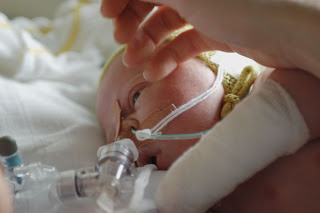Race Plays A Role In Neonatal Survival Rate
Researchers have uncovered ethnic differences in the risk of neonatal mortality and morbidity (disease) in the neonatal intensive care units (NICU). Of grave concern is the noted elevation in mortality rate in the NICU among infants of South Asian (East Indian) origin, which is over three times that of Caucasian infants. It was also found that Aboriginal males and East Asian females had significantly greater odds of survival.Interestingly, 'small for gestational age' was noted as a significant factor only among Caucasian infants, while only 'gestational age less than 29 weeks' was found to be a significant risk across all ethnic groups.
"Understanding these differences is important so we can determine what specific areas to target in order to improve health-care delivery and reduce these disparities," said Dr. Shoo Lee, Scientific Director of iCARE at the University of Alberta.
As the number of premature births in North America has increased over the last 20 years, questions have emerged about how best to care for newborns and their mothers, particularly in immigrant populations where inequalities in health outcomes may already exist.
In the United States, prematurity has been reported as the leading cause of neonatal death among African-American newborns, but the research team has found that neonatal sepsis (infection) was the strongest predictor of mortality among African-American infants, even greater than being born at 28 weeks of age or younger.
"Our results suggest that reducing neonatal infection among African-Americans newborns may help to lower these differences in mortality," said Lee.
When we found out that our baby was coming early the nurse told us that we wanted our baby to be a girl. They apparently have better survival statistics and fight harder to stay alive....
We ended up making out okay, but you can imagine our fears when we found out that I had just delivered a boy - at 24 weeks.


Comments